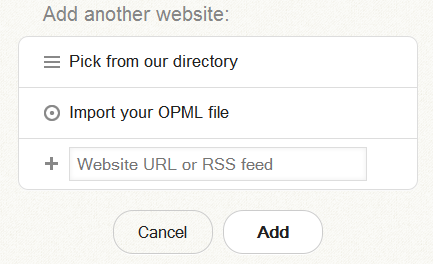Skimr is a Lightweight Google Reader Alternative for RSS Feeds
With the death of Google Reader just around the corner (it will be unavailable after July 1st), it is time to choose another service in order to keep up with our RSS feeds. After Google announcing the end of its feed reading service, many services and apps started to arise, with many different features and each one with its unique key aspects.
Skimr is one of such services, making the difference by its minimal, clean and mobile-friendly interface and design. Oh, and it is entirely free. We have already discussed some free alternatives of Google Reader for reading RSS feeds. Please check out Curata and Feedly.
Skimr is developed by three Czech developers and is still under development, even though it already works like a charm.
How to use Skimr
 First, you will need to set up a free account. For that you just have to provide an email address and a password, which will obvious be your login credentials from now on. You will then be presented with several “default” feed subscriptions for well-known websites, that can be deleted with ease with the ‘Edit’ button.
First, you will need to set up a free account. For that you just have to provide an email address and a password, which will obvious be your login credentials from now on. You will then be presented with several “default” feed subscriptions for well-known websites, that can be deleted with ease with the ‘Edit’ button.
In order to add a new feed to Skimr, just hit the ‘Add another website’ button and, from there, there are these three options:  In the first option, you can choose a feed from the directory offered by Skimr, which contains some of the most well-known websites from around the world. By importing an OPML file, the user can easily maintain all the feeds previously subscribed in other service (Google Reader, for example), provided that a backup in that format is made. Finally, you can directly add a link for your desired website’s RSS feed link or, if you do not know that link, Skimr can search it if you provide the website’s URL.
In the first option, you can choose a feed from the directory offered by Skimr, which contains some of the most well-known websites from around the world. By importing an OPML file, the user can easily maintain all the feeds previously subscribed in other service (Google Reader, for example), provided that a backup in that format is made. Finally, you can directly add a link for your desired website’s RSS feed link or, if you do not know that link, Skimr can search it if you provide the website’s URL.
Your newly added feed will then appear on your list, which is ordered alphabetically.
Best features in Skimr
I believe that what makes Skimr from any other RSS feed service is how its interface is designed. Another thing is that it only presents titles, the first few words of the articles and, if the user wants, the post’s highlighted picture (an option that can be toggled using the button highlighted in the image below).
 I also think that Skimr is perfect to use with mobile platforms, such as iPhone or iPad, with mobile network services, where traffic bandwidth is important. With Skimr, the user can check the article’s titles and few first words and, if he finds the articles to be interesting, might save them for latter reading. The ability to disable images is also important, since images are the biggest bandwidth “eaters”.
I also think that Skimr is perfect to use with mobile platforms, such as iPhone or iPad, with mobile network services, where traffic bandwidth is important. With Skimr, the user can check the article’s titles and few first words and, if he finds the articles to be interesting, might save them for latter reading. The ability to disable images is also important, since images are the biggest bandwidth “eaters”.
By clicking each of the items, you are redirected to the article’s original page. Skimr presents the latest 15 feeds, loading 15 more each time you press the ‘Load more skins’ button. From the main menu there is also the option to check the feeds for all the subscribed websites. They are arranged in a chronological fashion, also presented 15 at a time.
One of the latest features made available in Skimr is the ability to create folders, in which you can merge several feeds as you wish. This can also be made through the ‘Edit’ button from the main menu.
What is missing in Skimr?
Skimr does not offer any native apps, for Android, iOS or even Windows or Mac, a choice made by the developers. Arguabilly, this might be a setback for this service.
Also, since Skimr does not show the whole articles, which may be a good or a bad thing depending on one’s view, I believe that Skimr should allow for users to select articles for reading later. This can now be achieved using browser’s bookmarks or specific apps such as Pocket, but having a native option for this would be a great boost in productivity.
Have you tried or will you try Skimr? Let us know your thoughts in the comments.
